
Many concepts in PS are similar to those in Core Graphics, such as masks, paths, clipping, blending modes, etc. If you don’t understand the blending mode in Core Graphics, reading this article can give you a more rational understanding and understanding of the concept of blending mode in Core Graphics. This article does not contain the content of hybrid mode in iOS. Hope this article is helpful to you.
The layer blending mode determines the mode in which the pixels in the current layer are mixed with the pixels in the layer below, referred to as layer mode. Layer blending mode is one of the core functions in Photoshop CS3 and is also the most commonly used technical method in image processing. Use layer blending modes to create various layer effects and achieve creative graphic design works. There are 25 layer blending modes in Photoshop CS3, and each mode has its own calculation formula. Therefore, for the same two images, setting different layer blending modes will result in different image effects. According to the basic functions of each blending mode, it is roughly divided into 6 categories:

Before describing the layer blending mode, we first learn 3 terms: base color, mixed color and result color.
Base color: refers to the color of the layer below the current layer.
Mixed color: refers to the color of the current layer.
Result color: refers to the color obtained after mixing.
1. Normal blending mode
Each pixel edited in normal mode will directly form the result color. This is the default mode and the initial state of the image. In this mode, you can display the content of the next layer to varying degrees by adjusting the parameters of the layer opacity and layer fill value.





The darker pixels in the next layer are replaced by the lighter pixels in the current layer, achieving the effect of dissolving together with the background color. However, the resulting color is randomly replaced by pixels of the base or blended color, depending on the opacity at any pixel location. Therefore, the dissolve mode is best used with some coloring tools in PS, such as the brush tool, eraser tool, etc.



 # #3, Darken Blending Mode
# #3, Darken Blending Mode
When mixing in the darkening mode, the brightness of the drawn color is compared with the base color. Colors that are lighter than the base color are replaced, and colors that are darker than the base color remain unchanged. In Darken mode, view the color information for each channel and select the darker of the base and blend colors as the result color. Darkening mode causes colors that are lighter than the background color to be removed from the result color. As shown below, the light-colored image is removed from the result color and is replaced by a background that is darker than it. The color has been replaced.




base color is multiplied by the mixed color, and then divided by 255 to get the color value of the result color. The result color is always darker than the original color. When any color is combined with black in the multiply mode, the resulting color is still black, because the pixel value of black is 0; when any color is combined with white in the multiply mode While operating, the color remains unchanged because white has a pixel value of 255.
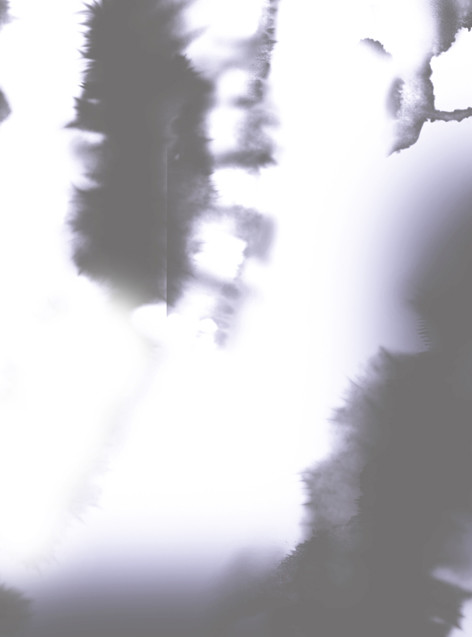




#5, Color Burn Blending Mode
Color Burn mode is used to view the color information of each channel, darkening the base color, thereby displaying the mixed color of the current layer. The image does not change when mixed
with black and white.




##6, Linear Burn Blending Mode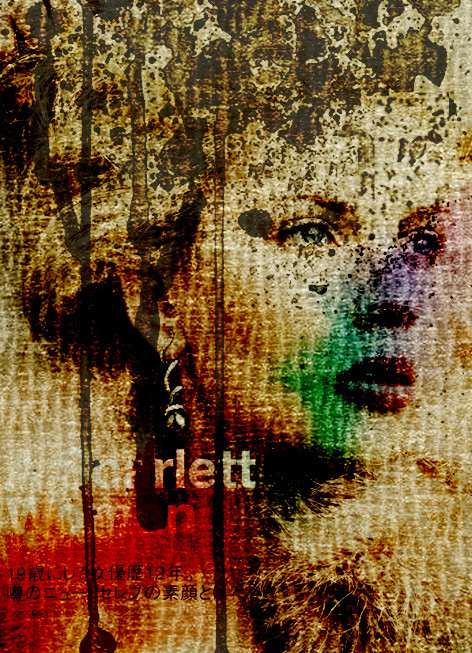




7, dark blend Mode
Dark blending mode directly covers the color of the dark tone area in the base color based on the saturation of the current image blend color. The brightness information contained in the base color remains unchanged, is replaced by the dark tone information in the mixed color, thereby obtaining the result color. The dark blend mode can reflect the performance of dark information in images with a lighter background, dark information and bright information.


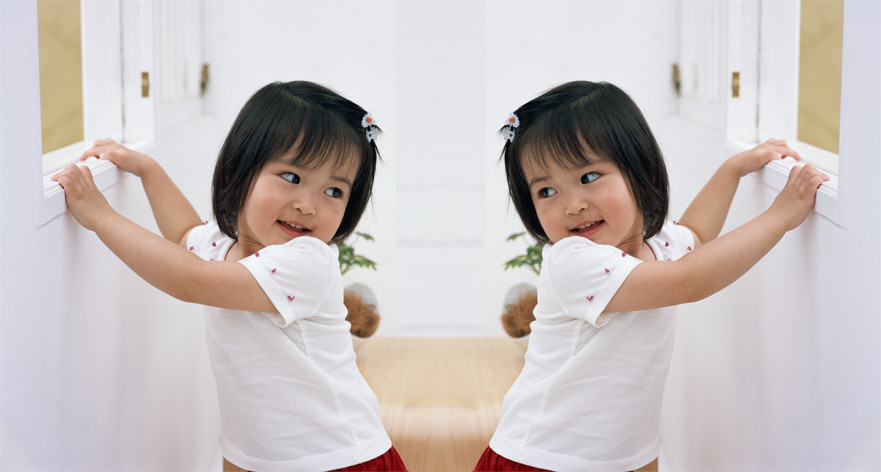
pixels that are lighter than the mixed color are not changed, thereby making the entire image brighter.



colors, which is Multiply the painted color with the complementary color of the base color and divide by 255 to get the blended effect. The color of the effect converted by this mode is usually very light, like being bleached, and the result color is always a lighter color. Since the filter blending mode works by retaining the bright colors in the image, taking advantage of this feature, the filter mode is usually used when processing silk-thin wedding dresses.




in addition, When correcting the underexposure phenomenon in the picture, you can also quickly adjust the image brightness by using the color filter mode.


10, Color Dodge blending mode
Color Dodge blending mode is used to view the color information of each channel, through Reduces contrast to lighten the base color, thus reflecting the blend color. Color Dodge blending mode is created similarly to Screen mode, except that edge areas on layers specified in are sharper, and strokes tinted in this mode are Effect!



11, Linear Dodge blending mode
Linear The Dodge blending mode has the opposite effect to the Linear Burn blending mode. It lightens the color by increasing the brightness, resulting in a brightening effect that is stronger than the Screen mode and Color Dodge mode. It works by looking at the color information for each channel and then brightening the base color by increasing the brightness to reflect the blended color. Color information in the image is minimized when mixed with white; no change occurs when mixed with black.




blended color to obtain the result color.



Overlay blending mode is actually a blending mode between Multiply mode and Screen mode. This mode overlays the blended color and the base color on top of each other, which means the underlying image controls the layer above it, making it lighter or darker. Areas darker than 50% will be darkened using Multiply mode, and areas
lighter than 50% will be lightened using Screen mode.




14, Soft light blending mode
The effect of soft light blending mode and diffuse spotlight Similar in image. This mode determines whether the final effect of the image is lighter or darker based on the lightness and darkness of the mixed color. If the mixed color is lighter than the base color, the resulting color will be brighter; if the mixed color is darker than the base color, the resulting color will be darker, which increases the brightness contrast of the image.
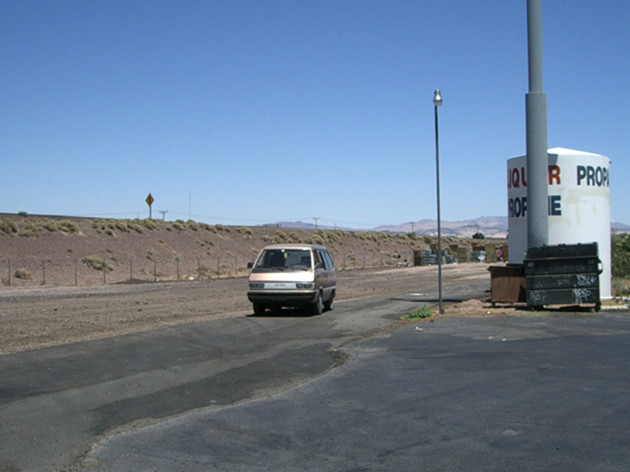

15, hard light blending mode

 16, bright blending mode
16, bright blending mode
The Glow blending mode darkens or lightens colors by increasing or decreasing contrast. If the pixels in the current layer are lighter than 50% gray, the image will be brightened by reducing the  contrast; if the pixels in the current layer are darker than 50% gray, the image will be made brighter by increasing the contrast. dark. The light mode is a combination of the color dodge mode and the color burn mode, which can make the mixed color more saturated.
contrast; if the pixels in the current layer are darker than 50% gray, the image will be made brighter by increasing the contrast. dark. The light mode is a combination of the color dodge mode and the color burn mode, which can make the mixed color more saturated.

 Linear light blending mode is a combination of linear dodge mode and linear burn mode. Linear light mode darkens or dodges a color by increasing or decreasing the brightness of the current layer color. If the pixels in the current layer are lighter than 50% gray, you can brighten the image by increasing the brightness; if the pixels in the current layer are darker than 50% gray,
Linear light blending mode is a combination of linear dodge mode and linear burn mode. Linear light mode darkens or dodges a color by increasing or decreasing the brightness of the current layer color. If the pixels in the current layer are lighter than 50% gray, you can brighten the image by increasing the brightness; if the pixels in the current layer are darker than 50% gray,
you can darken the image by decreasing the brightness. . Compared with the strong light mode, the linear light mode can produce a higher contrast in the image and also make more areas become 
black or white.
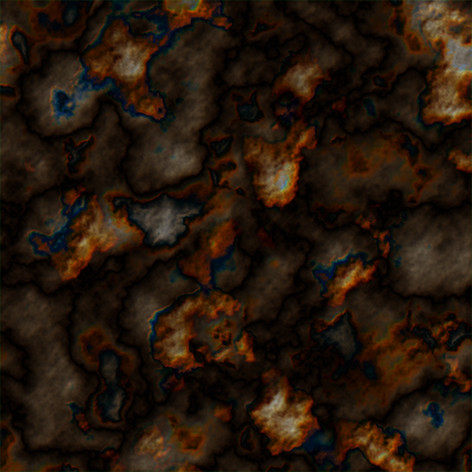


18, Point light blending mode
The point light blending mode actually replaces the color based on the current layer color. If the current layer color is lighter than 50% gray, the pixels darker than the current layer color are replaced, while the pixels lighter than the current layer color remain unchanged; if the current layer color is darker than 50% gray, Then pixels that are lighter than the current layer color are replaced, , while pixels that are darker than the current layer color remain unchanged.


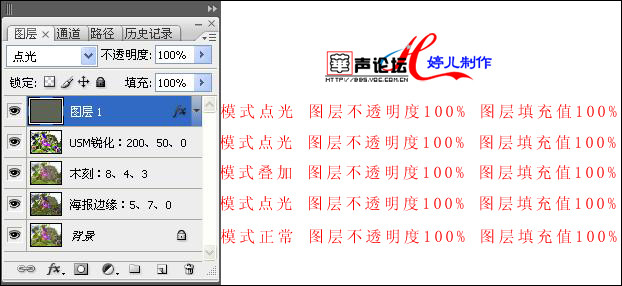

19, Solid color blending mode
In solid color blending mode, when the blended color is lighter than 50% gray, the base color becomes lighter; if the blended color is darker than 50% gray, the underlying image becomes darker. This mode usually produces a tonal separation effect in the image. When reducing the fill opacity, the contrast intensity can be weakened.



20, difference blending mode
The difference blending mode compares the brightness of the mixed color with the base color, and subtracts the pixel value of the darker color from the pixel value of the brighter color. The resulting difference is the pixel value of the final effect.



21, exclude blending mode
The exclusion blending mode is similar to the difference mode, but the exclusion mode has the characteristics of high contrast and low saturation, and the effect is softer and brighter than the difference mode. When white is used as a mixed color, the image is presented by inverting the base color; when black is used as a mixed color, the image does not change.




22, Hue blending mode
Hue blending mode is an effect created by selecting the brightness and saturation values of the base color and mixing them with the mixed color. , the brightness and saturation after mixing depend on the base color, but the hue depends on the mixed color.




23, Saturation blending mode
The saturation blending mode uses only the saturation value of the mixed color for coloring while maintaining the hue and brightness value of the base color. When the saturation values of the base color and the mixed color are different, the mixed color is used for coloring. If the saturation is 0, there will be no change when superimposed with any mixed color. When the base color remains unchanged, the lower the saturation of the mixed color image, the lower the resulting color saturation; the higher the saturation of the mixed color image, the higher the resulting color saturation.



24, color blending mode
Color blending modes reference the lightness of the base color and the hue and saturation of the blended color to create the result color. It is able to tint using the saturation and hue of the blended color simultaneously, This preserves the gray tones of the image, but the resulting color is determined by the blended color. Color mode can be regarded as the comprehensive effect of saturation mode and hue mode, and is generally used to add a monochrome effect to an image.
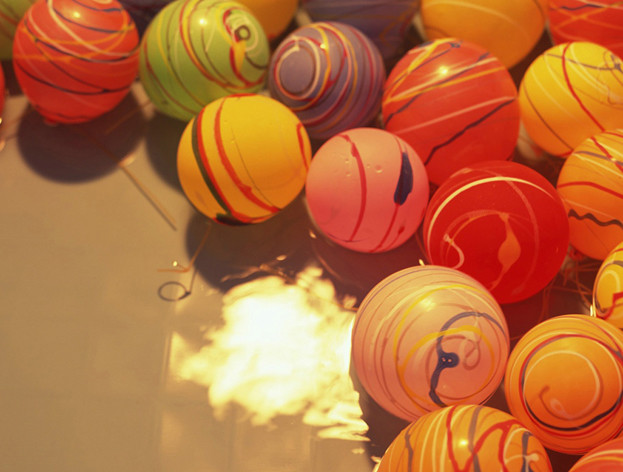


25, lightness blending mode
The brightness blending mode uses the brightness value of the mixed color to perform the performance, and uses the saturation and hue of the base color. Just the opposite of what color mode does.


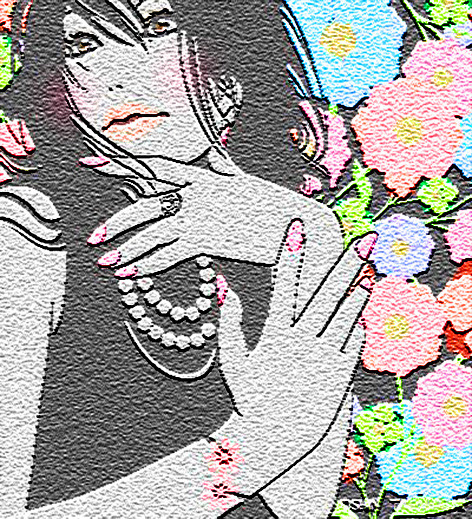 For more detailed examples of PS layer blending modes, please pay attention to the PHP Chinese website for related articles!
For more detailed examples of PS layer blending modes, please pay attention to the PHP Chinese website for related articles!




